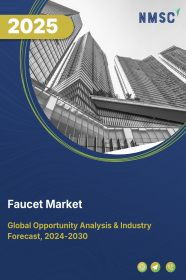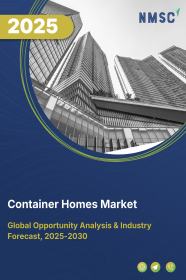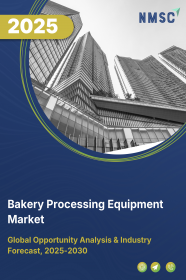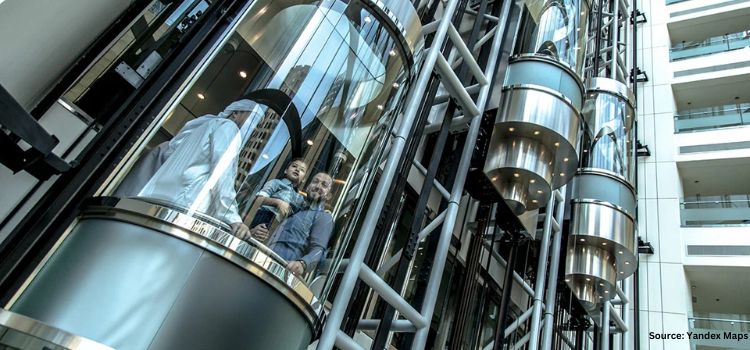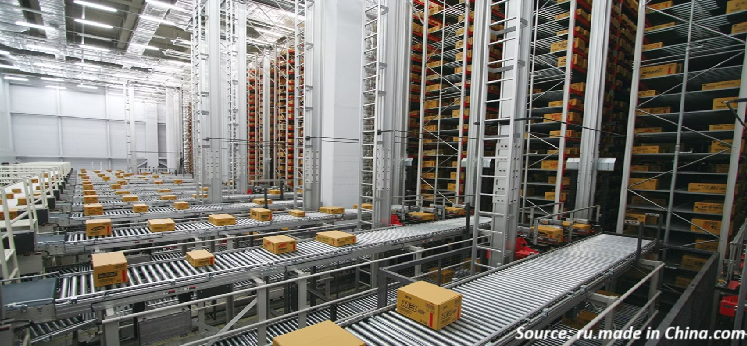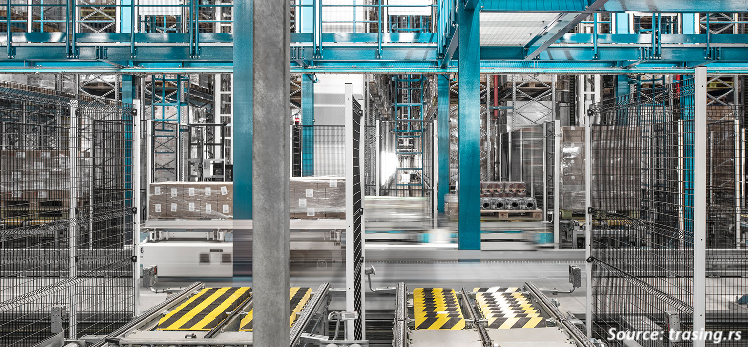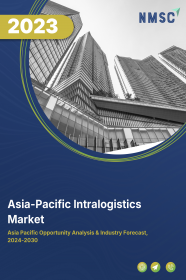
Asia-Pacific Intralogistics Market by Component (Hardware, Software, and Services), and by End User Industry (Logistics, Food & Beverages, Retail & E-commerce, Automotive, Chemicals, Pharmaceuticals, Airport, and Mining) – Opportunity Analysis and Industry Forecast 2023–2030
Industry: Construction & Manufacturing | Publish Date: 06-Dec-2023 | No of Pages: 142 | No. of Tables: 101 | No. of Figures: 72 | Format: PDF | Report Code : N/A
Market Definition
Asia-Pacific Intralogistics Market was valued at USD 11.86 billion in 2022, and is predicted to reach USD 44.48 billion by 2030, with a CAGR of 17.8% from 2023 to 2030. Intralogistics is a vital aspect of supply chain management, and its market is focused on the design, implementation, and maintenance of internal logistics systems. In order to maximise the flow of materials and effectively and economically meet the company's demands, it entails the movement, storage, and management of commodities within an organisation, such as a factory, warehouse, or distribution centre.
The intralogistics market involves the design, implementation, and maintenance of factory and warehouse systems and includes various industries such as manufacturing, retail, e-commerce, and healthcare. Material handling, inventory control, order fulfilment, and reverse logistics are some of the most frequent applications of intralogistics. The intralogistics industry is expanding as a result of rising need for quick and effective delivery, rising demand for automation, and rising demand for sustainable and environmentally friendly solutions.
Trade Unleashed: Intralogistics Market Surges in Response to Globalization and Free Trade Agreements
The flourishing landscape of free trade agreements and the relentless wave of globalization are propelling unprecedented growth in the regional intralogistics market. As trade volumes surge, businesses are confronted with an escalating demand for logistics solutions that are not only efficient but also reliably responsive.
This surge in demand has become a catalyst for the soaring popularity of intralogistics services. Companies, in their pursuit of seamless and agile supply chains, are increasingly turning to advanced intralogistics systems to meet the evolving challenges of a rapidly expanding global marketplace. This symbiotic relationship between the surge in trade and the need for sophisticated logistics solutions paints a dynamic picture of the intralogistics sector's integral role in facilitating the seamless flow of goods across borders in the era of heightened economic interconnectivity.
E-commerce Surge Ignites Intralogistics Boom: Precision in Fulfillment, Control in Inventory, and Mastery in Warehousing Demand Center Stage
The explosive growth of e-commerce has become a catalyst for a transformative surge in the demand for intralogistics services. With an emphasis on rapid and precise order fulfillment procedures, businesses are grappling with the imperative to adapt and enhance their intralogistics capabilities. This paradigm shift not only underscores the necessity for efficient order fulfillment but also accentuates the critical roles of advanced inventory control and optimized warehousing strategies.
The escalating synergy between e-commerce expansion and the heightened demand for intralogistics services paints a dynamic landscape, where businesses are compelled to fortify their logistics infrastructure to navigate the challenges of a fast-paced digital marketplace.
High Installation Cost of Intralogistics Systems Can Gloom the Market Prospects
The high installation cost of intralogistics systems can be a significant barrier to adoption and can limit the market prospects for these systems. Intralogistics systems typically require significant investments in technology and infrastructure, including specialized equipment, software, and hardware, as well as the cost of installation and maintenance.
Some organisations, especially small and medium-sized enterprises (SMEs), which may have limited resources to invest in these technologies, may find this high upfront cost to be prohibitive. The scale and complexity of the operation, the level of customization needed, and the level of automation requested can all have an impact on how much intralogistics systems cost. As a result, some businesses may opt for less expensive and less efficient alternatives, which can limit the growth and adoption of intralogistics systems in the market.
Unlocking Opportunities: Introduction of Drones in Intralogistics Industry to Create Future Market Prospects
The introduction of drones in intralogistics has the potential to create significant growth opportunities for businesses that rely on efficient supply chain operations. Drones, also known as unmanned aerial vehicles (UAVs), are being used in intralogistics to automate a range of tasks, including inventory management, order picking, and delivery.
Businesses may increase the accuracy and speed of their operations while cutting the time and expense of manual labour and transportation by utilising drone technology. Drones can also increase the flexibility and scalability of intralogistics, allowing businesses to quickly adjust to fluctuations in demand.
Moreover, drones can improve efficiency and reduce the risk of accidents or injuries for workers who might otherwise need to use ladders or other equipment to access these areas. In addition, drones can gather information on inventory levels, product quality, and other key metrics, providing businesses with valuable insights into their operations by using sensors and cameras. This data can be used to optimize processes, improve forecasting, and reduce waste, leading to cost savings and improved efficiency. All these above-mentioned factors are expected to create growth opportunities for the intralogistics market in the near future.
South Korea Holds the Dominant Market Share in the North American Market
The growth of e-commerce in South Korea has indeed significantly impacted the demand for material handling solutions, particularly within the realm of intralogistics. Intralogistics refers to the management of materials and information within a facility, such as a warehouse or distribution center, to optimize internal logistics processes.
For instance, in July 2022, LG CNS, the automation division of technology company LG made a cooperative effort with intralogistics specialist, TGW to open a location in Seoul, South Korea. With TGW's strong commitment to quality and LG CNS's IT expertise and extensive experience in the implementation of automated technologies, next-generation fulfilment centres in the Korean market are anticipated to gain more depth and detail.
India is Expected to Show Steady Growth in the North American Intralogistics Market
The burgeoning adoption of digital technologies coupled with the surge in online shopping has prompted companies in India to revolutionize their supply chain processes. In a quest for optimization, businesses are turning to innovative intralogistics solutions, ushering in a new era marked by cutting-edge technologies such as automated warehouses, conveyor systems, and robotics.
These advancements not only enhance efficiency but also cater to the growing demand for seamless and rapid supply chain operations. The resulting synergy between technological innovation and supply chain optimization is propelling the expansion of India's intralogistics market, positioning the nation at the forefront of transformative logistics solutions.
Competitive Landscape
The Asia-Pacific intralogistics industry includes several market players such as Daifuku Co. Ltd., Jungheinrich AG, Kion Group AG, Honeywell International Inc., Midea Group, Vanderlande Industries B.V., SSI Schaefer AG, KNAPP AG, Beumer Group Gmbh and Co. KG, and Autostore.
Key Benefits
-
The Asia-Pacific intralogistics market report provides a quantitative analysis of the current market and estimations through 2023-2030 that assists in identifying the prevailing market opportunities to capitalize on.
-
The study comprises a deep dive analysis of the market trend including the current and future trends for depicting the prevalent investment pockets in the market.
-
The information related to key drivers, restraints, and opportunities and their impact on the market is provided in the report.
-
The competitive analysis of the market players along with their market share in the Asia-Pacific intralogistics market.
-
The SWOT analysis and Porter’s Five Forces model are elaborated in the study.
-
Value chain analysis in the market study provides a clear picture of the stakeholders’ roles.
Asia-Pacific Intralogistics Market Key Segments
By Component
-
Hardware
-
Automated Storage and Retrieval Systems (AS/RS)
-
Unit-Load AS/RS
-
Mini-Load AS/RS
-
Vertical Lift Modules (VLMs)
-
Carousel AS/RS
-
-
Industrial Robots
-
Mobile Robots
-
Automated Guided Vehicles (AGV)
-
Autonomous Mobile Robots (AMR)
-
-
Conveyor Systems
-
Sortation Systems
-
-
Software
-
Services
By End User Industry
-
Logistics
-
Food and Beverages
-
Retail and E-Commerce
-
Automotive
-
Chemicals
-
Pharmaceuticals
-
Airport
-
Mining
By Geography
-
Asia-Pacific
-
China
-
Japan
-
India
-
South Korea
-
Australia
-
Indonesia
-
Singapore
-
Taiwan
-
Thailand
-
Rest of Asia-Pacific
-
REPORT SCOPE AND SEGMENTATION:
|
Parameters |
Details |
|
Market Size in 2022 |
USD 11.86 Billion |
|
Revenue Forecast in 2030 |
USD 44.48 Billion |
|
Growth Rate |
CAGR of 17.8% from 2023 to 2030 |
|
Analysis Period |
2022–2030 |
|
Base Year Considered |
2022 |
|
Forecast Period |
2023–2030 |
|
Market Size Estimation |
Billion (USD) |
|
Growth Factors |
Flourishing landscape of free trade agreements and Explosive growth of e-commerce. |
|
Countries Covered |
9 |
|
Companies Profiled |
10 |
|
Market Share |
Available for 10 companies |
|
Customization Scope |
Free customization (equivalent up to 80 working hours of analysts) after purchase. Addition or alteration to country, regional, and segment scope. |
|
Pricing and Purchase Options |
Avail customized purchase options to meet your exact research needs. |
KEY PLAYERS
-
Daifuku Co. Ltd.
-
Jungheinrich AG
-
Kion Group AG
-
Honeywell International Inc.
-
Midea Group
-
Vanderlande Industries B.V.
-
SSI Schaefer AG
-
KNAPP AG
-
Beumer Group Gmbh and Co. KG
-
Autostore

















 Speak to Our Analyst
Speak to Our Analyst



